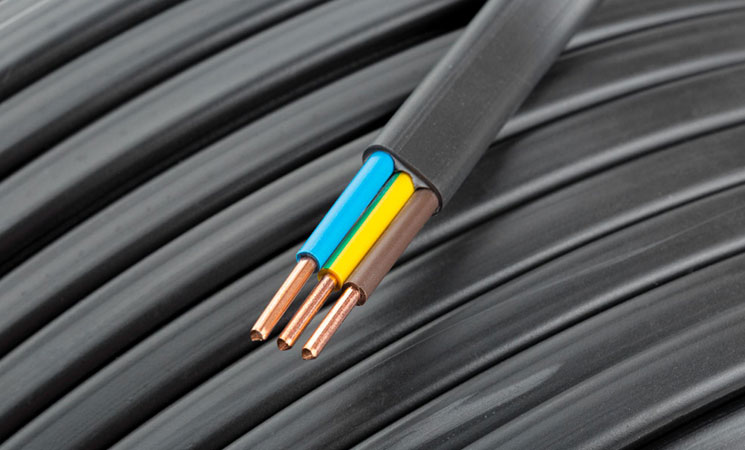The effectiveness of communication and data transfer in the digital age largely depends on the caliber and effectiveness of network infrastructure. The cabling system is one of the many parts that make up this infrastructure, but it is frequently overlooked yet is very important. In particular, the Cat5e (Category 5e) cable, which balances performance, dependability, and affordability, has become a mainstay of network infrastructure. This blog explores the evolution, technical details, benefits, and application of Cat5e cable wiring in current and future networking settings, the importance of Cat5 Cabling contractors in New Jersey, and how it affects current network architecture.
The Evolution of Cat5e Cabling
Cat5e cabling, an enhancement of the original Category 5 cable, was introduced to the market in the late 1990s. The “e” in Cat5e stands for “enhanced,” this enhancement primarily revolves around the cable’s ability to handle higher data transfer rates and reduce interference.
Cat5e cables were designed to support Gigabit Ethernet (1000 Mbps) at distances up to 100 meters (328 feet), a significant improvement over their predecessor, which was limited to 100 Mbps. This upgrade was crucial when the demand for higher bandwidth and faster internet speeds was burgeoning due to the proliferation of the internet and the increasing use of data-intensive applications.
Technical Specifications of Cat5e Cables
it’s essential to understand the technical specifications to appreciate the impact of Cat5e cables:
Bandwidth: Cat5e cables are rated for up to 100 MHz, allowing them to support Gigabit Ethernet speeds (1000BASE-T).
Twisted Pair Design: These cables consist of four twisted pairs of copper wires. The twisting helps to reduce crosstalk (interference between the pairs) and electromagnetic interference (EMI) from external sources.
UTP and STP Variants: Cat5e cables come in Unshielded Twisted Pair (UTP) and Shielded Twisted Pair (STP) variants. UTP is more common and cost-effective, while STP provides additional shielding for environments with high EMI.
Backward Compatibility: Cat5e cables are backward compatible with Cat5 and Cat3 standards, ensuring they can be used in various networking setups without requiring a complete infrastructure overhaul.
Advantages of Cat5e Cabling in Modern Networks
Cat5e cables offer several advantages that have cemented their place in modern network infrastructure:
Cost-Effectiveness: One of the most significant benefits of Cat5e cables is their affordability. They provide a high-performance solution at a fraction of the cost of more advanced cabling options like Cat6 or Cat7.
Ease of Installation: Cat5e cables are relatively easy to install and terminate, making them a preferred choice for both professional installers and DIY enthusiasts.
Adequate Performance for Most Applications: For many small to medium-sized businesses and residential networks, Cat5e cables provide sufficient performance, supporting high-speed internet, VoIP, and video streaming without issues.
Versatility: Cat5e cables’ backward compatibility ensures that they can be integrated into existing network setups with older cabling standards, providing a seamless upgrade path.
Impact on Small and Medium Enterprises (SMEs)
For SMEs, cost and performance are critical factors when choosing network infrastructure. Cat5e cables strike an ideal balance, offering robust performance at a manageable price. This makes them popular for setting up internal networks, connecting computers, printers, and other peripherals, and ensuring reliable internet connectivity.
Impact on Residential Networks
In residential settings, the proliferation of smart devices and the increasing reliance on high-speed internet for activities such as streaming, online gaming, and remote work have driven the demand for reliable network cabling. Cat5e cables have proven to be more than capable of meeting these demands, providing households with the bandwidth necessary for modern digital lifestyles.
Transition to Higher Standards and Future-Proofing
While Cat5e cables continue to serve most network needs, there is an ongoing transition towards higher categories such as Cat6, Cat6a, and Cat7, especially in environments where future-proofing is a priority. These newer cables offer higher bandwidth and better performance over longer distances, essential for supporting emerging technologies like 10 Gigabit Ethernet.
However, the transition is gradual and often driven by specific requirements. In many cases, Cat5e remains a viable option for current needs and foreseeable future upgrades, particularly in environments where the additional performance of higher-category cables would be underutilized.
Environmental Considerations
As the global community becomes more environmentally conscious, the disposal and recycling of network cabling have gained attention. Cat5e cables, like other copper-based cables, can be recycled, reducing their environmental impact. Additionally, their durability means they can remain used for many years, mitigating waste.
The Role of Cat5e in Wireless Networking
It’s also worth noting the role of Cat5e cabling in supporting wireless networks. Wireless access points (WAPs) often use Cat5e cables to connect to wired networks, providing the necessary bandwidth to support multiple wireless devices. This hybrid approach leverages the strengths of both wired and wireless technologies to deliver robust and flexible networking solutions.
The Enduring Relevance of Cat5e Cables
In conclusion, Cat5e cables have significantly impacted modern network infrastructure. Their balance of performance, cost-effectiveness, and ease of installation have made them a ubiquitous choice in commercial and residential settings. While advancements in network cabling technology continue to push the envelope, Cat5e remains a reliable and efficient solution for many current applications.
As we look to the future, it’s clear that Cat5e will continue to play a role in networking, even as higher-category cables become more prevalent. Its ability to support high-speed internet and a wide range of networked applications will remain valuable in network professionals’ and home users’ toolkits.
Whether upgrading an existing network or building a new one from scratch, understanding the strengths and capabilities of Cat5e cabling is crucial for making informed decisions that balance performance, cost, and future readiness. As such, Cat5e’s impact on modern network infrastructure is profound and enduring, solidifying its place as a cornerstone of digital connectivity.













